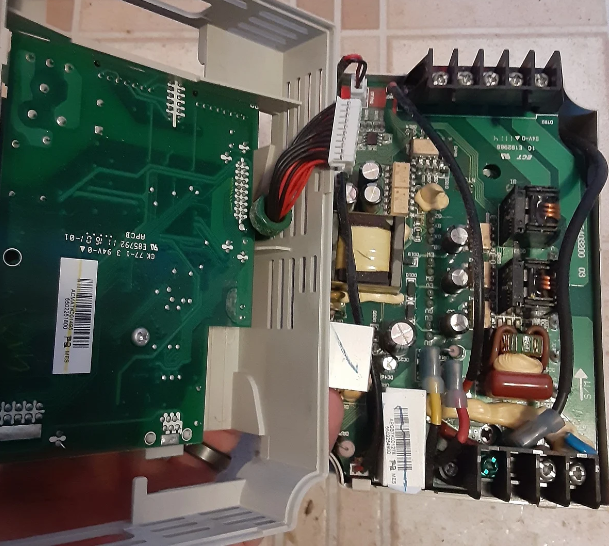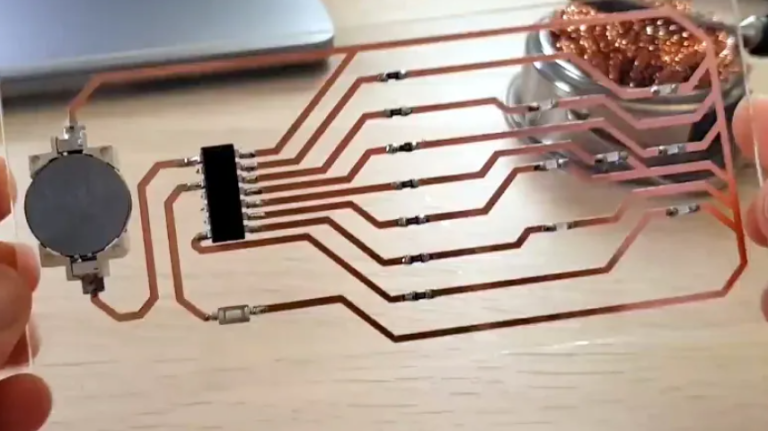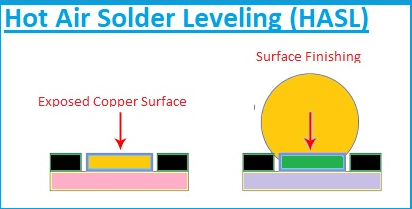Mastering Board PCB Assembly: Essential Techniques for Success
Key Takeaways
Mastering pcb assembly is crucial for anyone involved in electronics projects, whether professional or hobbyist. One of the most important aspects to remember is that pcba requires a solid understanding of the fundamental principles of circuit design and hardware integration. This knowledge serves as a foundation for applying various techniques effectively. Additionally, having the right tools and equipment is essential; using high-quality soldering irons, appropriate solder, and flux can greatly influence the quality of your assembly.
Best practices such as maintaining a clean work environment can prevent many common issues encountered during pcb assembly processes. For instance, avoiding dust and moisture on both boards and components helps ensure that connections are stable and reduce the risk of failure. Furthermore, meticulous attention to quality control measures will aid in identifying issues early on, leading to more successful outcomes in your projects.
Optimizing pcba layout plays a significant role in making the assembly process smoother. Thinking ahead about component placement can minimize soldering challenges and help reduce assembly time. By staying informed on emerging trends and developments in board PCB techniques, you can continuously improve your skills and streamline processes for better efficiency. Ultimately, implementing these key takeaways will not only elevate your proficiency in pcb assembly but also enhance the overall quality of your projects.
Understanding the Basics of Board PCB Assembly
When delving into pcb assembly or PCBA, it’s important to grasp the foundational components and processes that define the assembly operation. At its core, board PCB assembly involves the combination of various electronic components to create a functional printed circuit board (PCB). Understanding these basics not only enhances your skills but also aids in streamlining the assembly process.
The design process for a PCB begins with schematics, which provide a visual representation of how components will interact. These schematics guide the layout design, where the placement of component pads, traces, and vias is determined. Proper layout design is essential for ensuring effective signal integrity, which directly influences the performance of the assembled board.
After designing, the next step in pcb assembly involves selecting appropriate materials and tools. Some essential tools include soldering irons, stencil printers for applying solder paste, and pick-and-place machines that automate component placement. Familiarity with these tools enhances efficiency and minimizes errors during assembly.
In terms of assembly techniques, you can categorize them into two main processes: through-hole and surface mount technology (SMT). Through-hole technology provides robust connections but requires larger spaces on the PCB. In contrast, SMT allows for miniaturization and is widely used in modern electronics due to its efficiency and effectiveness.
Here’s a quick overview comparing these techniques:
| Technique | Advantages | Disadvantages |
|---|---|---|
| Through-Hole | Strong mechanical connection | Larger space requirements |
| Surface Mount Technology | Space efficiency and high-speed assembly | Requires more precise placement |
By mastering these fundamental principles of board PCB assembly, you set a strong groundwork for advanced techniques and practices that are essential for success in any electronics project.
Essential Tools and Equipment for PCB Assembly
In the world of PCB assembly (also known as PCBA), having the right tools and equipment is crucial for achieving high-quality results. Essential tools include soldering irons, which allow for precise application of solder to joints, and multimeters, which are used to measure voltage, current, and resistance, ensuring that components are correctly placed and functioning as intended. Other important equipment encompasses various shades of soldering stations, which provide temperature-controlled environments that improve solder quality and longevity.
Additionally, a stencil machine can be invaluable when applying solder paste accurately and consistently across the board. To handle smaller components with ease, a set of tweezers designed specifically for PCB assembly is recommended. As you work on your projects, maintaining an organized workspace with appropriate storage solutions for tools and components can significantly boost your efficiency.
“The right tools can turn a complex project into a smooth sailing experience,” a seasoned PCB assembler once noted.
Remember to also invest in high-quality safety gear such as anti-static wrist straps to protect your components from static damage, along with safety glasses to shield your eyes from flux fumes during soldering. Selecting the proper tools not only enhances your capabilities but also reduces the risk of errors during the pcba process, leading to successful outcomes in all your electronic ventures.
Step-by-Step Guide to Successful PCB Assembly
Successfully executing PCB assembly requires a systematic approach that begins with meticulous planning. First, ensure that you have a comprehensive bill of materials (BOM) that lists all components needed for your project; this will streamline the process and minimize errors. Next, prepare your printed circuit board (PCB) by carefully inspecting the design files for any discrepancies and confirming they match the BOM. Once verified, gather essential tools and equipment such as soldering stations, soldering irons, tweezers, and magnifying glasses.
The actual assembly process involves placing components on the PCB with precision. It is crucial to follow the correct orientation indicated by silkscreen markings on the board. For components like resistors and capacitors, using automated equipment can enhance efficiency and accuracy in placement. Once placement is complete, connect the leads by applying solder judiciously to ensure strong electrical connections while avoiding excess that could cause shorts.
After soldering, it is essential to perform a thorough inspection. Utilize both visual inspection methods and automated optical inspection (AOI) systems to identify potential defects in the PCBA. After confirming quality standards are met through quality control measures, it’s time for functional testing; this step verifies that every solder joint and connection performs correctly under operational conditions.
Finally, documenting your assembly procedures serves not only as a record of best practices but also as a resource for future projects. Adopting these step-by-step techniques will not only enhance your skills in PCB assembly, but also contribute significantly to the overall success of your electronic projects.
Common Challenges in PCB Assembly and How to Overcome Them
In the world of PCB assembly (PCBA), various challenges can arise, impacting the efficiency and effectiveness of the assembly process. One major obstacle is the alignment of components, particularly when dealing with densely populated boards. Misalignments during soldering can lead to poor electrical connections or permanent damage to the components. To mitigate this issue, employing precise alignment tools and taking extra time during the placement phase can significantly enhance assembly accuracy.
Another prevalent challenge is soldering defects, which may manifest as cold solder joints or bridges between components. These defects can compromise functionality and reliability. To overcome this, adopting best practices in soldering techniques is crucial; this includes controlling temperature settings and using the right solder materials. Ensuring proper cleaning of surfaces before soldering can also help eliminate contaminants that may affect adhesion.
Lastly, managing component obsolescence poses a serious challenge as parts become difficult to source over time. Designers should always keep future availability in mind by selecting components that are universally available or by incorporating standardized parts when possible. By being proactive in addressing these common hurdles, manufacturers can ensure smoother workflows, improve overall product quality, and ultimately achieve greater success in their PCB assembly projects.
Best Practices for Soldering Techniques in PCB Assembly
Successful pcb assembly hinges largely on the effectiveness of your soldering techniques. Understanding the properties of the solder and the components you’re working with is crucial. Start by ensuring that the PCBA surfaces are clean and free of contaminants, as this promotes strong adhesion and electrical connectivity. Utilize a high-quality soldering iron with appropriate temperature control; too high a temperature can damage components, while too low can result in poor joints.
When it comes to applying solder, aim for a technique known as wetting, which occurs when the solder fills the joint evenly, creating a solid connection. Move fluidly and avoid leaving excess solder that could lead to solder bridges, which are unintentional connections between adjacent pads that can cause circuit failures. For through-hole components, ensure that you apply heat from both sides for an optimal joint.
Choosing the right type of solder is equally important—lead-free options are becoming popular; however, they generally require higher temperatures to melt properly. Lastly, practice good habits by ensuring a consistent workflow: start from one end of your pcb assembly project and work your way through systematically to minimize errors and shortcuts.
By following these best practices in your soldering approach, you not only improve your efficiency but also enhance the reliability and performance of your assembled boards. Implementing these techniques can significantly elevate your skill level in pcba, leading towards more successful project outcomes.
Quality Control Measures in Board PCB Assembly
In the world of PCB assembly (PCBA), ensuring quality is one of the most critical factors that can determine the success of any project. Implementing rigorous quality control measures throughout the board PCB assembly process not only helps in identifying defects early but also contributes to the overall reliability of the final product. One essential practice is to conduct regular inspections during various stages of assembly, from the initial setup to final testing. Techniques such as Automated Optical Inspection (AOI) and X-ray inspection can effectively detect issues such as misaligned components, solder joint defects, and hidden solder problems that might elude the naked eye.
Additionally, establishing a robust documentation process can aid in tracking potential defects back to their source, allowing teams to implement corrective actions swiftly. Training operators on soldering techniques and proper handling of components plays a vital role in minimizing errors during PCBA. Furthermore, adhering to industry standards—such as IPC-A-610 for acceptable soldered connections—ensures that all assembled boards meet a specific quality benchmark. By cultivating a culture of quality awareness among team members dedicated to board PCB assembly, organizations can enhance their reputability and achieve higher customer satisfaction through trustworthy products. Implementing these quality control measures is not just beneficial; it is essential for sustaining competitiveness in an increasingly demanding market.
Tips for Optimizing PCB Layout for Easier Assembly
Optimizing the layout of your PCB is crucial for ensuring a smooth and efficient pcb assembly process. Start by utilizing adequate spacing between components to avoid any solder bridging, which can lead to manufacturing defects. Moreover, strategically placing heavier components near the PCB’s center helps in balancing the thermal and mechanical stress during assembly. Using a ground plane not only enhances electrical performance but also aids in thermal management, allowing for easier heat dissipation during soldering. Consider employing PCBA design rules that dictate optimal trace widths and lengths to ensure reliable connections and signal integrity. Additionally, making use of fiducial markers can significantly enhance alignment accuracy during the assembly process, minimizing potential errors. Lastly, document all layout decisions carefully; having a clear rationale helps in troubleshooting during both the assembly phase and later in production runs. By implementing these strategies, you can greatly streamline your pcb assembly operations and bolster the reliability of your final products.
Future Trends in Board PCB Assembly Techniques
As technology continues to evolve, the pcb assembly industry is witnessing a dynamic shift towards automation and advanced manufacturing processes. One of the most significant trends is the growing implementation of robotic systems in pcba workflows. These systems enhance precision and efficiency, minimizing human error and leading to higher-quality assemblies. Additionally, smart manufacturing technologies are being adopted to facilitate real-time monitoring and control over the assembly process, allowing for improved adaptability and responsiveness to production demands.
Another emerging trend is the integration of Internet of Things (IoT) solutions, which enables better tracking of components throughout the assembly line. This connectivity not only enhances supply chain visibility but also aids in predictive maintenance of machinery, reducing downtime and ensuring that the board PCB assembly process runs smoothly. Furthermore, there is an increasing focus on sustainability in pcb assembly, with manufacturers exploring eco-friendly materials and waste reduction techniques that align with global environmental standards.
Additionally, advancements in materials science are leading to the development of lighter and more flexible substrates that can improve both functionality and performance while allowing for more compact designs. This aligns with market demands for smaller electronic products without compromising on quality. As we look toward the future, it is clear that these innovations will not only redefine how pcba is performed but also set new standards for efficiency, quality, and sustainability in the industry.
Conclusion
In summary, mastering board PCB assembly (often abbreviated as PCBA) requires a multifaceted understanding of various techniques and best practices. Through meticulous attention to detail in each step, from the selection of components to the final inspection, one can significantly enhance the quality and reliability of the assembled boards. It is paramount to stay updated with the latest tools and methodologies that contribute to efficient PCB assembly processes. By incorporating quality control measures and keeping abreast of emerging trends in pcba, professionals can ensure that their projects not only meet but exceed industry standards. Ultimately, those who actively refine their skills will find success in navigating the complexities of board PCB assembly, paving the way for innovative solutions in electronics fabrication.
FAQs
What is PCB assembly?
PCB assembly, or PCBA, refers to the process of connecting electronic components to a printed circuit board (PCB) to create a functional electronic circuit. This involves several steps, including soldering components onto the board and ensuring proper electrical connections.
What are the common methods used for PCB assembly?
The two primary methods for PCB assembly are Surface Mount Technology (SMT) and Through-Hole Technology (THT). SMT allows components to be mounted directly onto the surface of the PCB, while THT involves inserting leads through holes in the board before soldering.
What tools are essential for successful PCB assembly?
Key tools required for effective pcb assembly include a soldering iron, tweezers, a microscope or magnifying glass for inspection, and appropriate solder materials. Additionally, having a good multimeter can help test connections after assembly.
How can I overcome common challenges in PCB assembly?
Common challenges in pcb assembly, such as misalignment of components or poor solder joints, can often be addressed by using precision placement tools, maintaining clean working environments, and conducting thorough inspections throughout the process.
What quality control measures should be taken during PCB assembly?
Implementing quality control measures such as regular visual inspections, functional testing of assembled boards, and adherence to industry standards can significantly improve the reliability of your PCBA.






